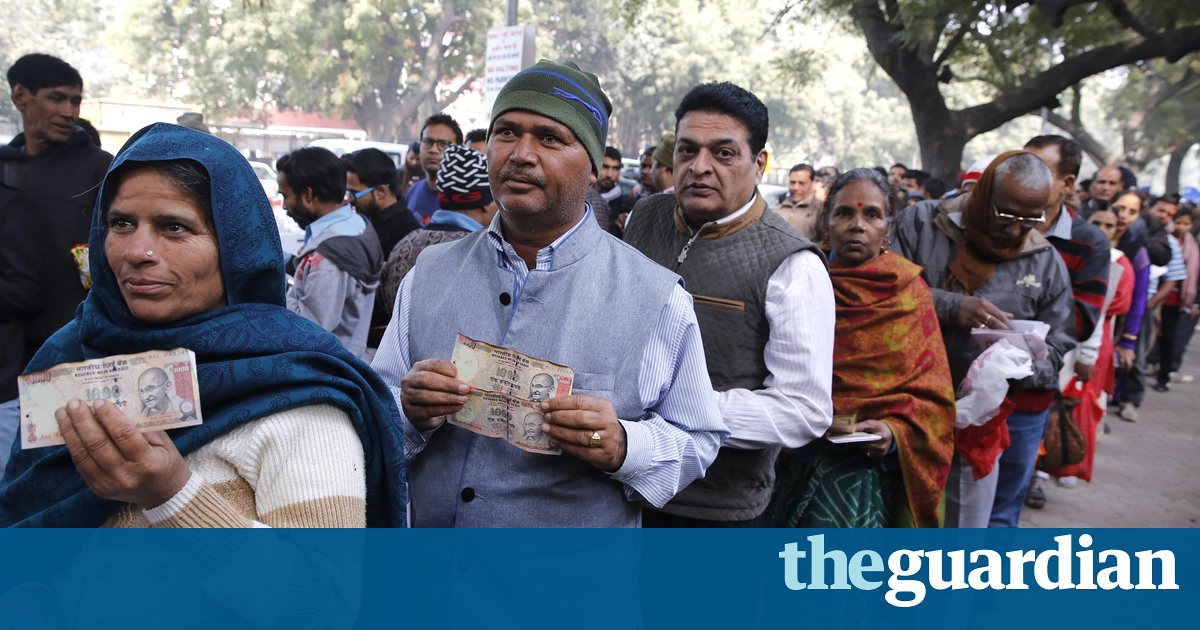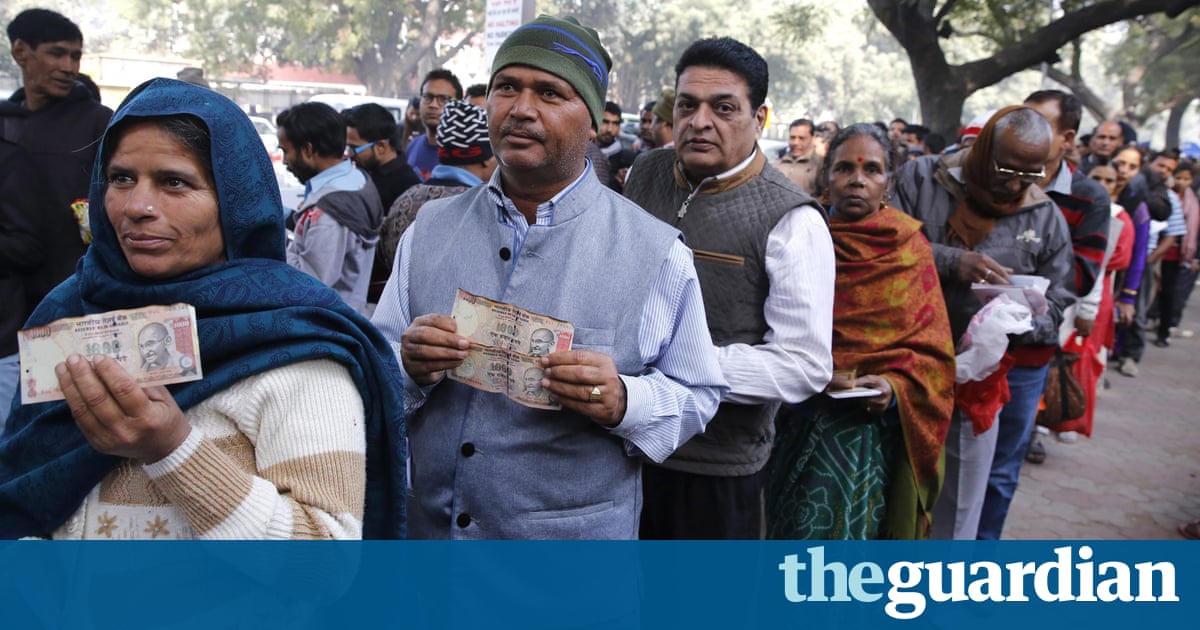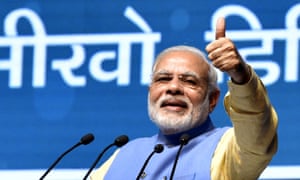India’s banknote ban: how Modi botched the policy yet kept his political capital

His plea for 50 days of grace has expired, yet the prime minister may survive thanks to his framing of demonetisation as a strike against corrupt elites

Birjas story is typical and to an outsider, confounding. The 32-year-old works as a housemaid in Delhi, and like more than one billion Indians, has seen her cash evaporate since November, when India suddenly recalled its two-highest value banknotes.
Poor people like me are in trouble, she says. Two of her employers have been able to pay her only in expired currency, which needs to be deposited or exchanged at banks. That presents a problem: I do not have a bank account, she says.
Nor can the 32-year-old spend hours waiting in the long lines that formed outside banks and ATMs the morning after demonetisation was announced, and linger still. If I stand in queue everyone will be angry, she says of her bosses. They will count it as my holiday.
The prime minister, Narendra Modi, has implored Indians to allow 50 days for the the estimated 22bn notes that were removed from the system on 8 November to be gradually replaced.
That self-imposed deadline ended on Friday with the majority of the countrys ATMs still bare, and people such as Birja still struggling. My husband is an auto-rickshaw driver, who earns 300 rupees [3.60] every day after rent, she says. But for last seven days he has not earned anything.
Yet the rupee recall might only be the second most extraordinary political phenomenon India has observed in the past seven weeks. The first is that support for Modis scheme, especially among those it has hit hardest, appears to be holding for now.
I will vote for him again, Birja says. He is doing this for poor people. If the black money goes from the market, then everybody will have a better life. He works for the people.
As chief minister of Gujarat, one of Indias wealthier states, Modi cultivated a reputation as a master administrator. But the execution of demonetisation planned in secret, reportedly by a handful of bureaucrats working from Modis residence has been badly botched.
Design changes in the new 500- and 2,000-rupee notes have meant that each of the 220,000 ATMs in India had to be reconfigured one-by-one. Even if they could dispense new cash, there isnt enough to give: reprinting the equivalent value of physical notes that were eliminated from Indias economy will take until mid-February, at least.
Digital payments have reportedly soared, but offer limited relief in a country where 40% still lie outside the ambit of formal banking, according to government figures.
The shock has been tremendous and widely spread, says Anil Bhardwaj, the secretary general of the Federation of Indian Micro and Small & Medium Enterprises.
Indias cash economy is estimated to account for 80% of the countrys employment and 45% of its GDP. And thats where the impact is biggest says Bhardwaj.
Because more and more cash is involved in buying raw materials and paying wages to workers. And of course, your customers are paying for your products in cash.
Delhi alone has witnessed an exodus of up to 60% of the migrant workers who laboured for cash in the citys building sites and factories. In rural areas, villagers have reportedly reverted to bartering or credit. The expected impact has led economists to reduce Indias growth forecast for the quarter from 7.8%, the highest of any major economy in the world, to 6.5%.
Worse still for Modi are indications the policy has not unearthed the hoards of black money he promised. While the operations of some criminal networks, especially human traffickers, appear to have been disrupted, about 90% of the cancelled notes in circulation have been returned to banks, far more than what the government had estimated. That suggests either that Indians were hiding less untaxed wealth than first believed, or that the money is being stashed in property or gold instead of cash.
Few democratic leaders could survive such a bungling of their signature policy, especially one that strands virtually every citizen from their money.
No reliable polling has been done on Modis standing among Indians since the demonetisation announcement, but public unrest has been relatively contained, and Indian media have not struggled to find supporters of the scheme, even among those waiting in long bank queues.
The ruling Bharatiya Janata party (BJP) has also won several local elections in the countrys western and norther states in the past month, despite the ongoing cash shortages.
It speaks to Modis enormous political capital, says Prashant Jha, an associate editor with the Hindustan Times. Halfway through his term, the Indian prime ministers popularity is still enormous, measured at 81% by a Pew poll in September.
The policy and its subsequent hardships have also been masterfully framed, says Modi biographer Nilanjan Mukhopadhyay. Modi presented the entire idea of demonetisation as a highly moral act, he says.
He recalled how Modi, in his first address after demonetisation, appeared to break down before the crowd in Goa, saying he had left behind my home, my family, everything for the nation and that the forces up against me … may not let me live.
He wore a cloak of morality, presenting that he had risen above personal ambitions for the cause of the nation, and inviting Indians to also sacrifice a little bit for the nation, Mukhopadhyay says. He asked them to participate in the process of nation-building by standing in queues.

Demonetisation has also been cast as decisive blow against the elites who profit from Indias endemic corruption, a source of deep resentment among the countrys poor and aspirational classes, who are routinely made to pay bribes for basic government services.
Thats why the majority of the poor are still in favour of this move, says Bhardwaj, from the small enterprise lobby.
Even while going through the pain, they see it as a leveller, and that at least one powerful political leader has taken a decision that rattles the bigwigs and elites.
The most resounding judgment of the scheme will be delivered early this year when elections are held in Uttar Pradesh. As Indias largest state, with a population the size of Brazils, it offers enough seats to secure or scuttle the rest of Modis first-term agenda.
One close observer, Sharat Padhin, a veteran political journalist based in the state, suggests Modi might be vindicated. In this state demonetisation has created a divide between the rich and poor, he says.
The poorer classes seem to be getting some kind of vicarious pleasure from thinking: Im facing difficulties by standing in a queue, but the rich people who acquired wealth by dubious means, all their black money is gone.
Whether these same people feel the pain was worth it, once money starts flowing again, will decide the fate of Indias seemingly indomitable prime minister.
Modi has become a larger-than-life leader, Padhin says. And he is tied up with demonetisation. Everyone down on the street knows that this thing was done by Modi.